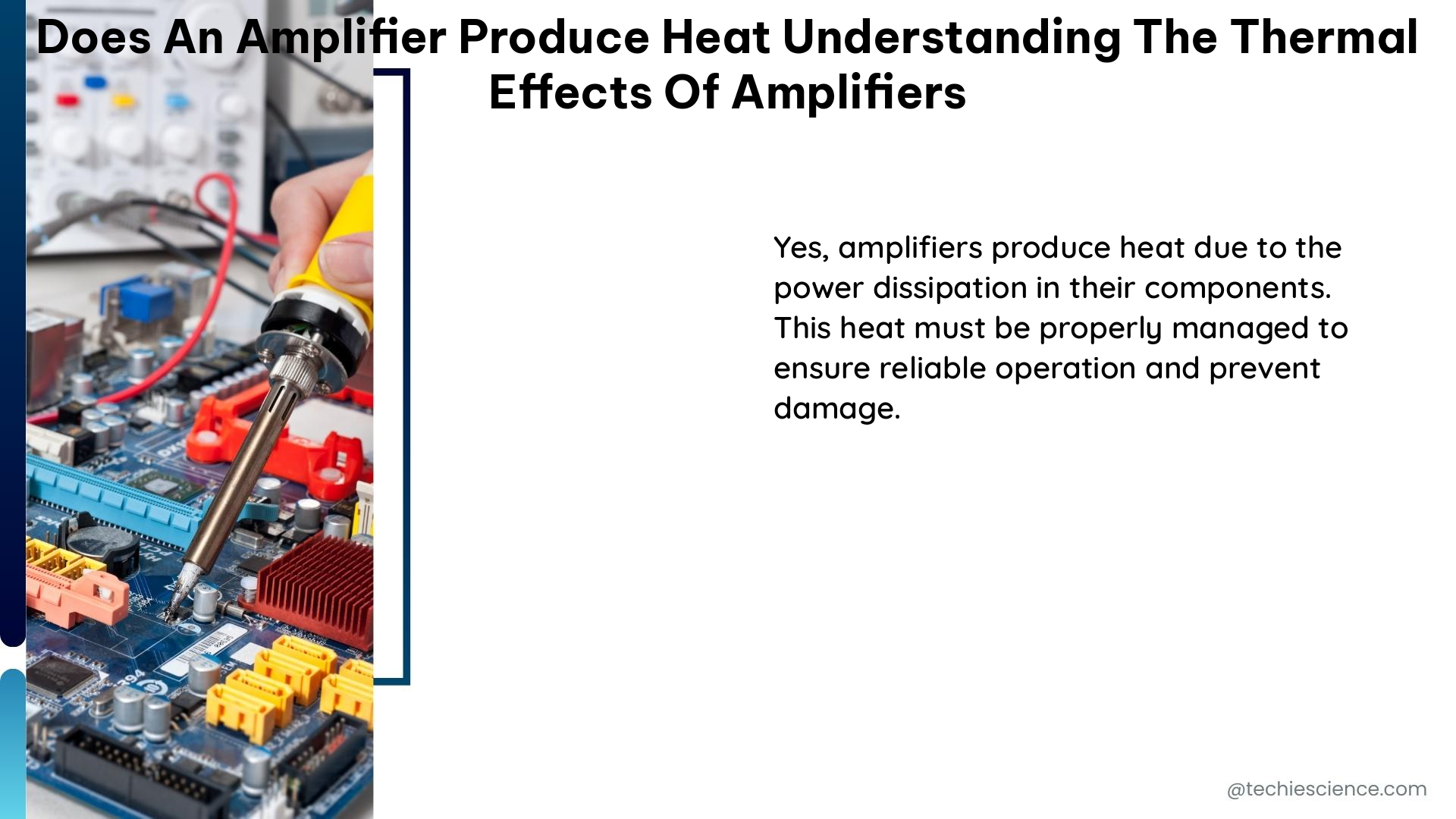Amplifiers, particularly those that operate in Class A mode, produce heat as a byproduct of their operation. This heat is a result of the electrical energy that is not converted into sound waves and is instead dissipated as heat. The amount of heat produced by an amplifier is related to its power output and efficiency. For example, a Class A amplifier that produces 60 watts of audio power at 8 ohms and has a current of 30 amps will produce a significant amount of heat. This heat can affect the sound quality of the amplifier and can also shorten its lifespan if it is not properly managed.
Understanding Thermal Resistance and Its Impact on Amplifier Heat
To understand the thermal effects of amplifiers, it is important to consider the thermal resistance of the components used in the amplifier’s design. Thermal resistance is a measure of how well a material conducts heat. Components with low thermal resistance, such as metal heatsinks, can help to dissipate heat more effectively and reduce the operating temperature of the amplifier. On the other hand, components with high thermal resistance, such as plastic enclosures, can trap heat and cause the operating temperature of the amplifier to rise.
The thermal resistance of a component can be calculated using the formula:
R_th = (T_j - T_a) / P
Where:
– R_th is the thermal resistance in °C/W
– T_j is the junction temperature of the component in °C
– T_a is the ambient temperature in °C
– P is the power dissipated by the component in watts
By understanding the thermal resistance of the components used in an amplifier’s design, engineers can optimize the layout and cooling system to effectively manage the heat generated during operation.
Quantifying the Thermal Effects of Amplifiers

The thermal effects of amplifiers can be quantified using various measurements and calculations. One of the most important metrics is the power dissipated by the amplifier, which can be calculated using the formula:
P = I * V
Where:
– P is the power in watts
– I is the current in amps
– V is the voltage in volts
Once the power dissipation is known, the temperature rise of the amplifier can be calculated using the formula:
ΔT = P * R_th
Where:
– ΔT is the temperature rise in °C
– P is the power dissipated in watts
– R_th is the thermal resistance in °C/W
By using these formulas, engineers can predict the operating temperature of an amplifier under various load conditions and design the cooling system accordingly.
Thermal Management Strategies for Amplifiers
To manage the thermal effects of amplifiers, it is important to ensure that the amplifier is properly ventilated and that the components used in its design have low thermal resistance. This can be achieved through the following strategies:
-
Heatsink Design: Choosing the right heatsink material and geometry can significantly improve the heat dissipation capabilities of the amplifier. Aluminum and copper are commonly used materials for heatsinks due to their high thermal conductivity.
-
Airflow Management: Ensuring adequate airflow around the amplifier components can help to remove the generated heat. This can be achieved through the use of fans, vents, and strategic placement of the amplifier within the enclosure.
-
Component Selection: Selecting components with low thermal resistance, such as power transistors with integrated heatsinks, can help to reduce the overall thermal load on the amplifier.
-
Thermal Monitoring: Continuously monitoring the operating temperature of the amplifier and taking corrective action when the temperature rises above a safe level can help to prevent thermal-related failures.
-
Thermal Simulation: Utilizing thermal simulation software can help engineers to model the heat dissipation characteristics of the amplifier and optimize the cooling system design before the physical implementation.
By implementing these thermal management strategies, engineers can ensure that the amplifier operates within its safe temperature range, maintaining its sound quality and reliability over its lifetime.
Conclusion
Amplifiers, particularly those operating in Class A mode, produce significant amounts of heat as a byproduct of their operation. Understanding the thermal effects of amplifiers and implementing effective thermal management strategies is crucial for ensuring the optimal performance and reliability of these devices.
By considering the thermal resistance of the components, quantifying the power dissipation and temperature rise, and employing various cooling techniques, engineers can design amplifiers that can effectively manage the heat generated during operation. This knowledge is essential for the development of high-performance, reliable, and long-lasting audio equipment.
Reference:
- Does the heat an amp puts out have any effect on the sound quality?
- Amplifier storage highest temperature?
- Thermal Analysis is Vital for High-Power MMIC, MCM, and RF PCB Applications
- Power Amplifiers

The lambdageeks.com Core SME Team is a group of experienced subject matter experts from diverse scientific and technical fields including Physics, Chemistry, Technology,Electronics & Electrical Engineering, Automotive, Mechanical Engineering. Our team collaborates to create high-quality, well-researched articles on a wide range of science and technology topics for the lambdageeks.com website.
All Our Senior SME are having more than 7 Years of experience in the respective fields . They are either Working Industry Professionals or assocaited With different Universities. Refer Our Authors Page to get to know About our Core SMEs.